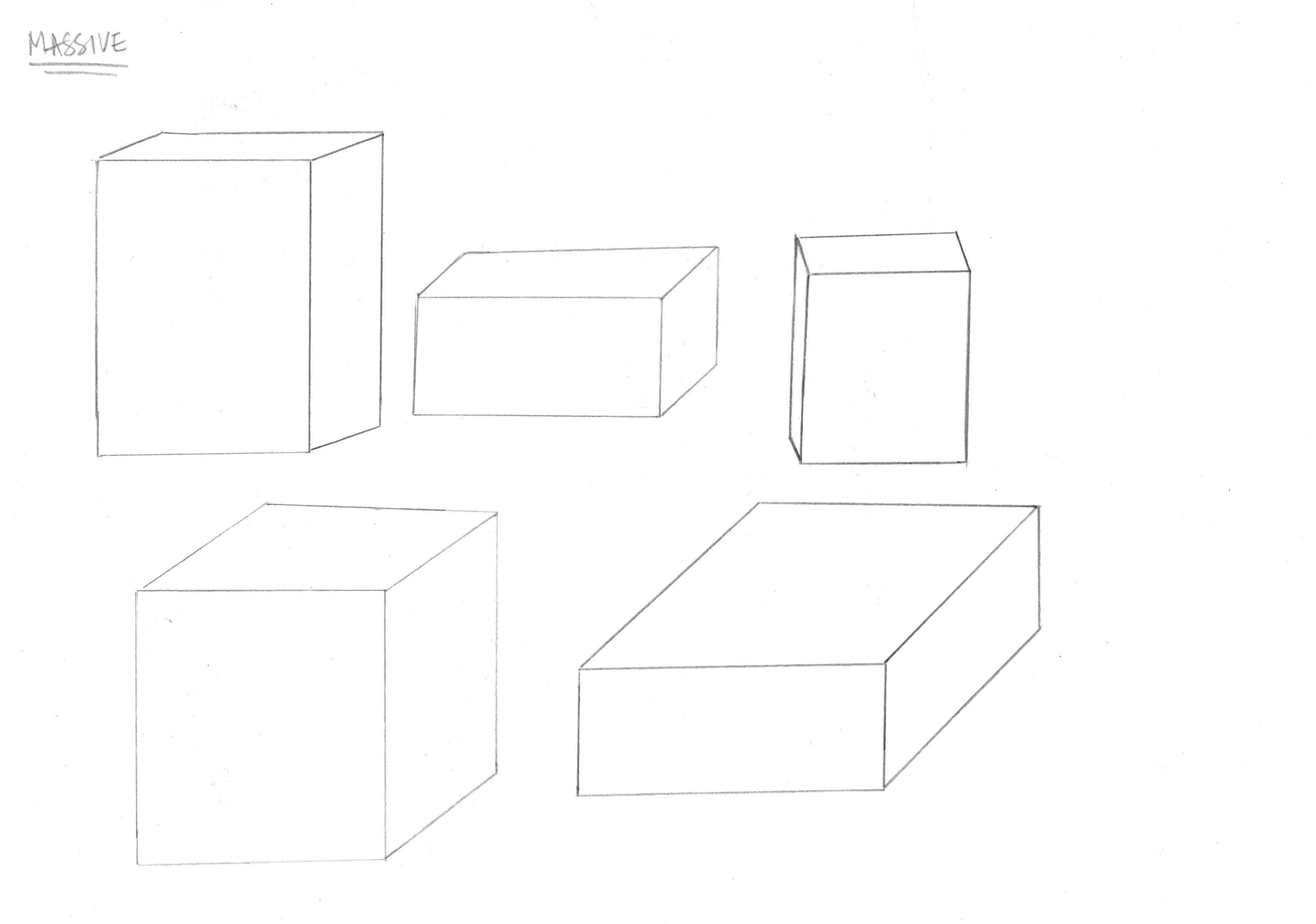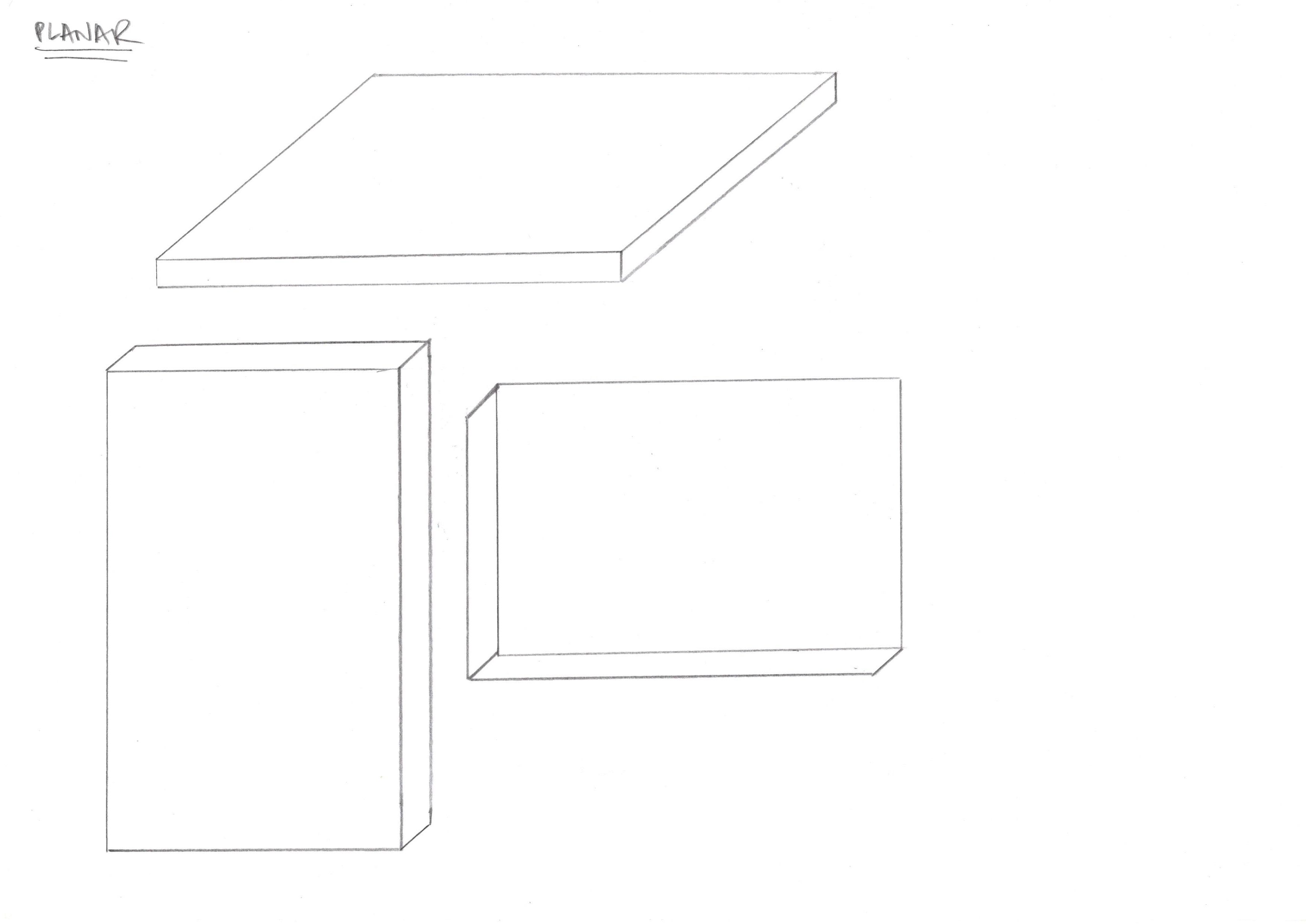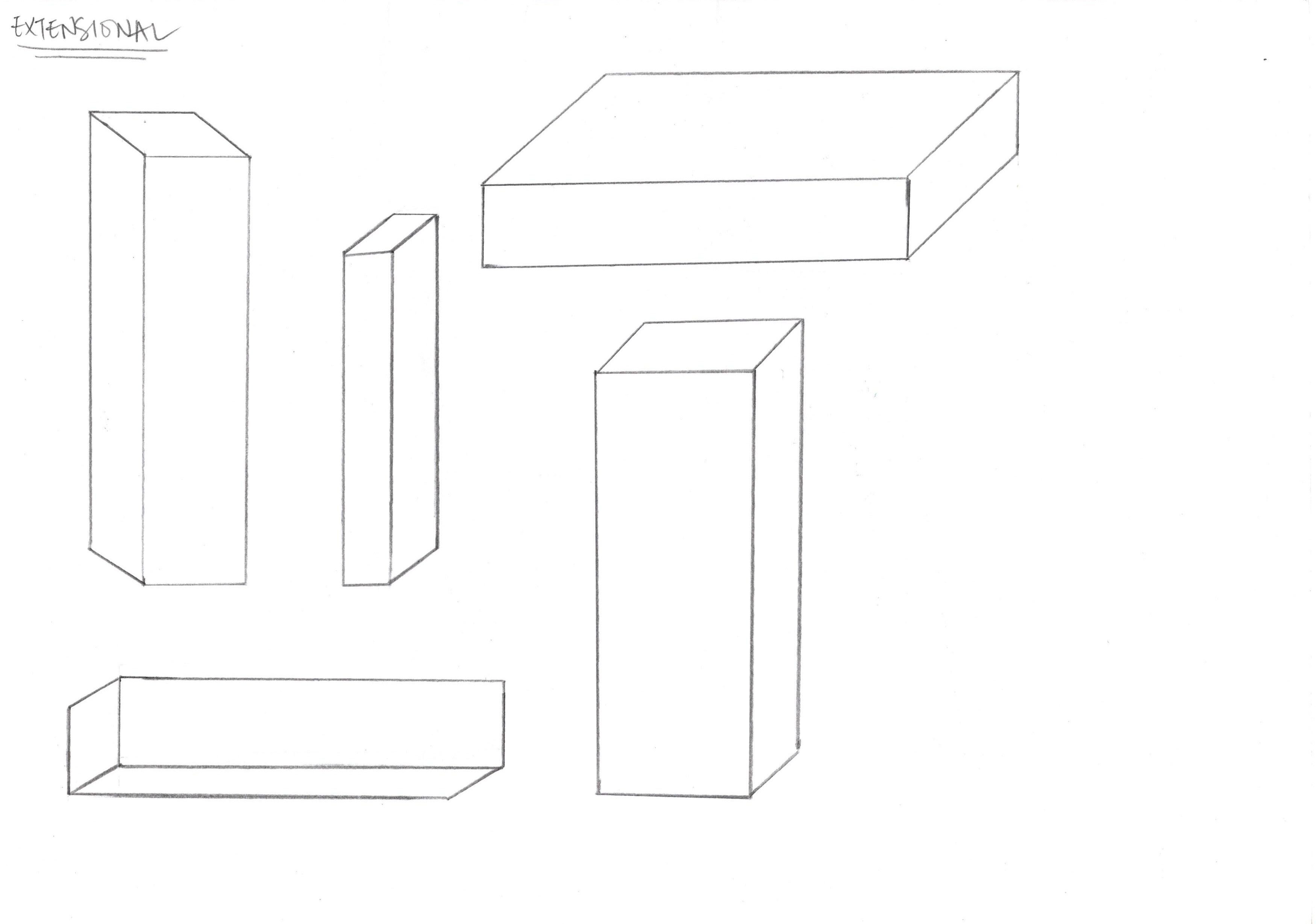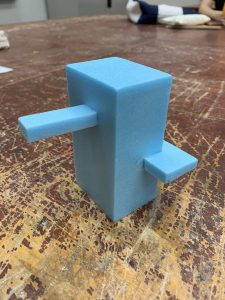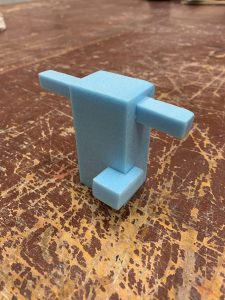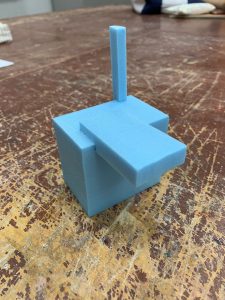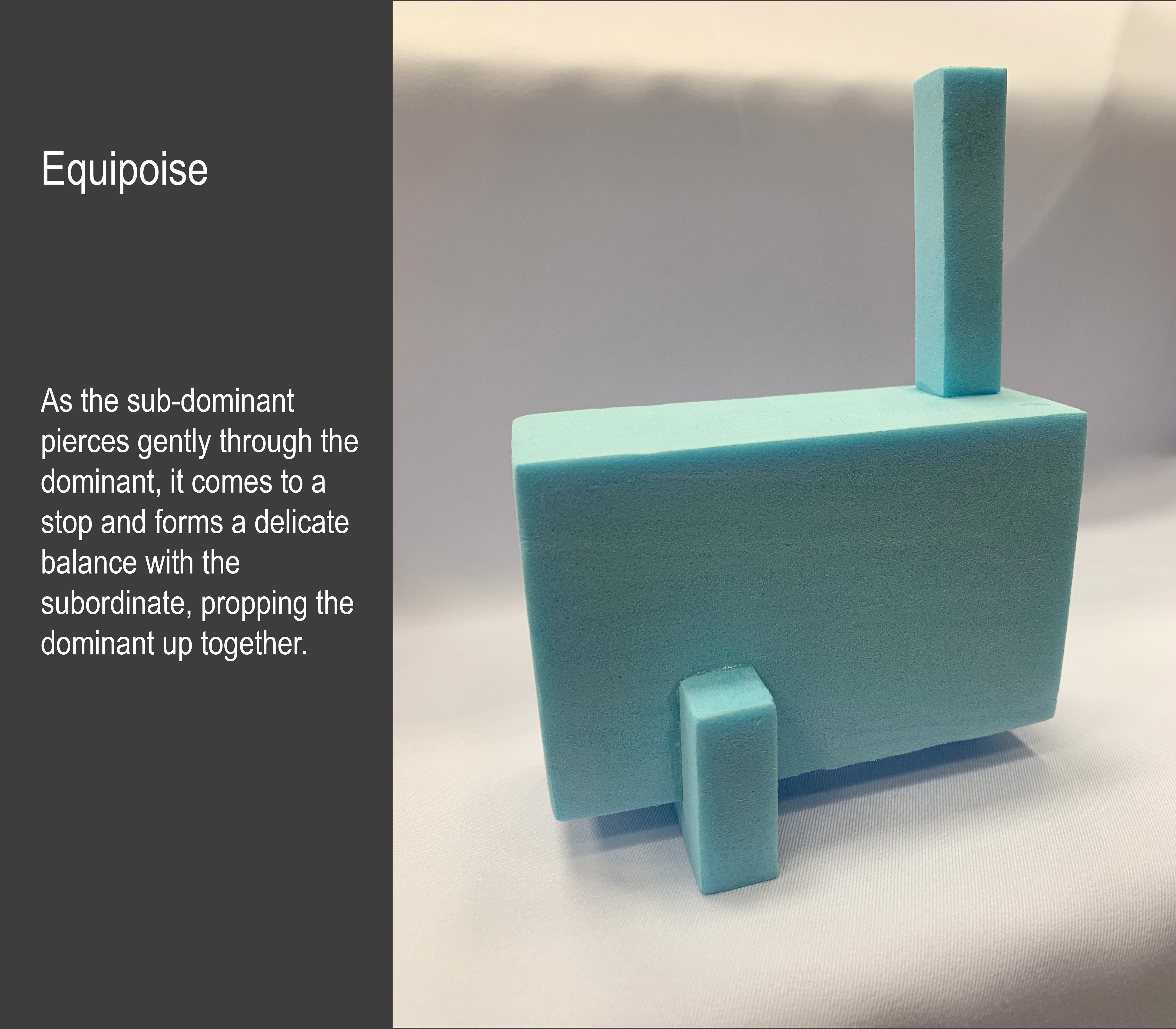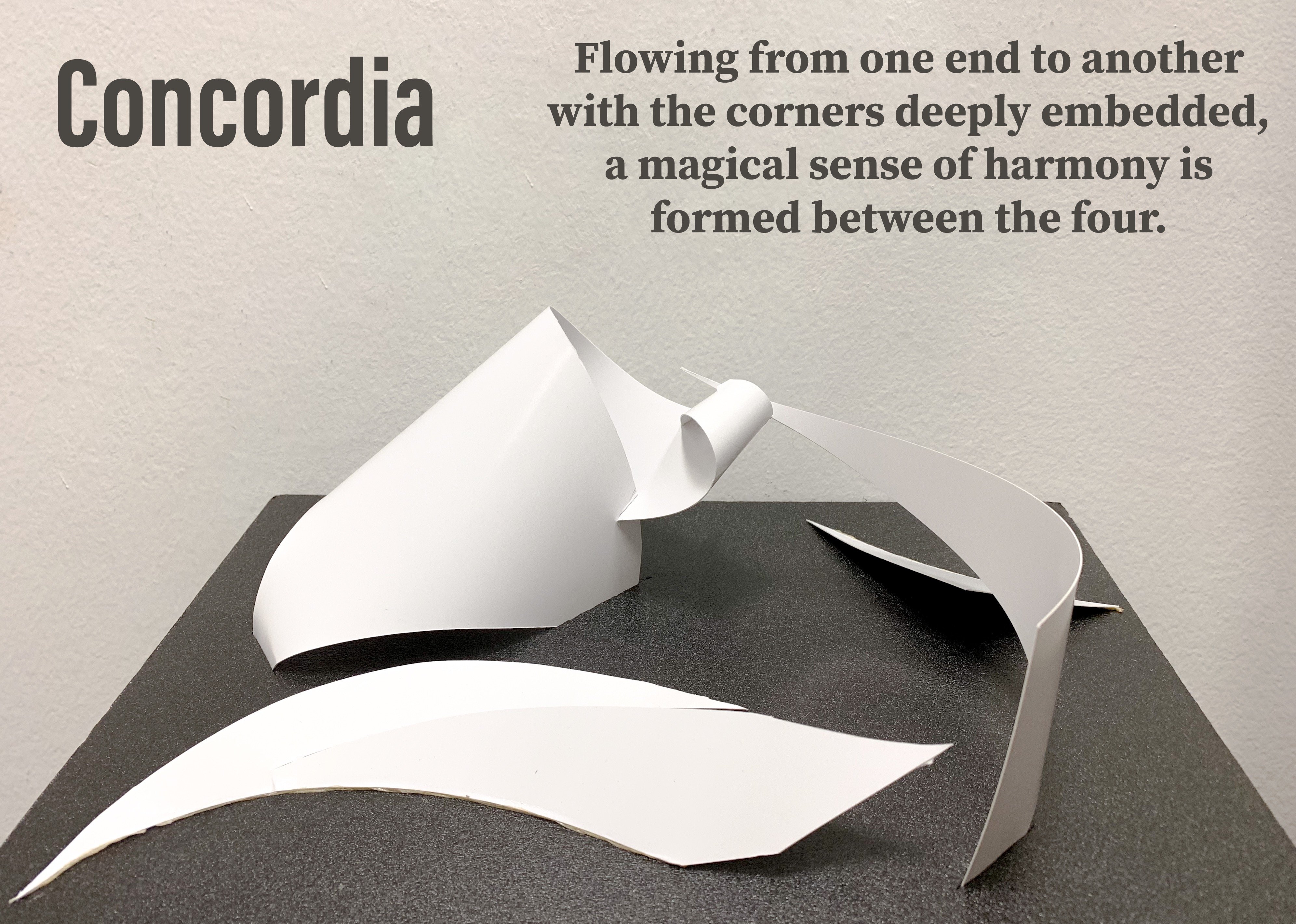“Make it simple, but significant.” — Don Draper (fictional character from Mad Men)
Planar Construction
What is a Plane??
– An element that has surface direction unaccompanied by mass
– Is a path of a moving line
– Has width and length
– Has a shape / surface
– Has a specific orientation / position
– Expresses direction and movement
– Expresses different axial quality
– Can be 2D or 3D
A plane has ‘no depth’ unlike volume. In a 3D space, it can be horizontal, vertical or even bent. They have axises and express direction & movement + axial properties.
Planes
1. Suggests movement → Ribbon Arch
2. Defines and encloses space → Heydar Aliyev Centre, Zaha Hadid
3. Axes in planes indicate direction → Vitra Fire Station, Zaha Hadid
4. Forms pattern (repetition) and textures (cleats) → 2D Textured Designs
5. Adopting different geometries → Pierre Cardin + Viktor & Rolf (fashion design)
6. Implies mass or volume → Richard Serra, TTI London, (2007)
As applied in Design
– Abstract Wave Graphics by Andrea Minini
– Bicho de Bolso (Pocket Creature), 1966, by Lygia Clark
– “The Matter of Time”, 2005, by Richard Serra
– Curved Creased Sculptures by Erik Demaine // creating mountain & valley folds
– 3-D printed Ceramic Carafe and Cups by Unfold (Belgium)
– Blue Carpet, Public Art Project (Newcastle) by Thomas Heatherwick
– Handbag by Finell
– Project 27 by Roman Vlasov
– Richard Sweeney, Origami Artist
– Issey Miyake
– Zaha Hadid
bending is organic // folding is angular & dynamic
Types of Axises
-
- Neutral (any part of a circle)
- Resting
- Supporting (will “spring up” if pressed)
- Trajectory
- Hyperbolic (like a boomerang, going back)
- Parabolic (more open ended than the hyperbolic axis)
- Reverse (can also be a figure 8)
- Catenary (created by gravity)
- Directional (has a dramatic change in direction)
- Accentual (one part is straighter and the other is more curved)
- Spiral (primadonna curve)
- Straight
** The axis follow the longest line through the shape 🙂
Types of 2D Planes
-
- Straight Axis Planes
- Bent Axis Planes (has a sharp change in axial direction)
- Curved Axis Planes (has a curvature & the axial direction is curved)
- Complex Axis Planes (has more than one axis within the shape itself)
Types of 3D Planes
-
- Curved Planes (encloses space)
- Twisted Planes
- Broken Planes (has a sharp change in axial direction)
- Grouped Planes (group of planes e.g. twist + curve + broken)
What makes a Good Structure?
-
- Each planar construction should have 3-5 planes.
- Consist of one dominant, 1-2 sub-dominants & 1-2 subordinate pieces
- It should appear dynamic from all angles (should not have a overly heavy and blocking piece)
- It should not be be symmetrically designed.
- It can have an implied volume but it should not form a closed structure!
- Pleats, Curved Creases and Repeated Strips are allowed!!
- Establish a hierarchy planar mass and/or axis & use only the following key operations to join the final model:- Cut
– Slot
– Crease
– Fold
– Twist
First Round
First Planar Construction
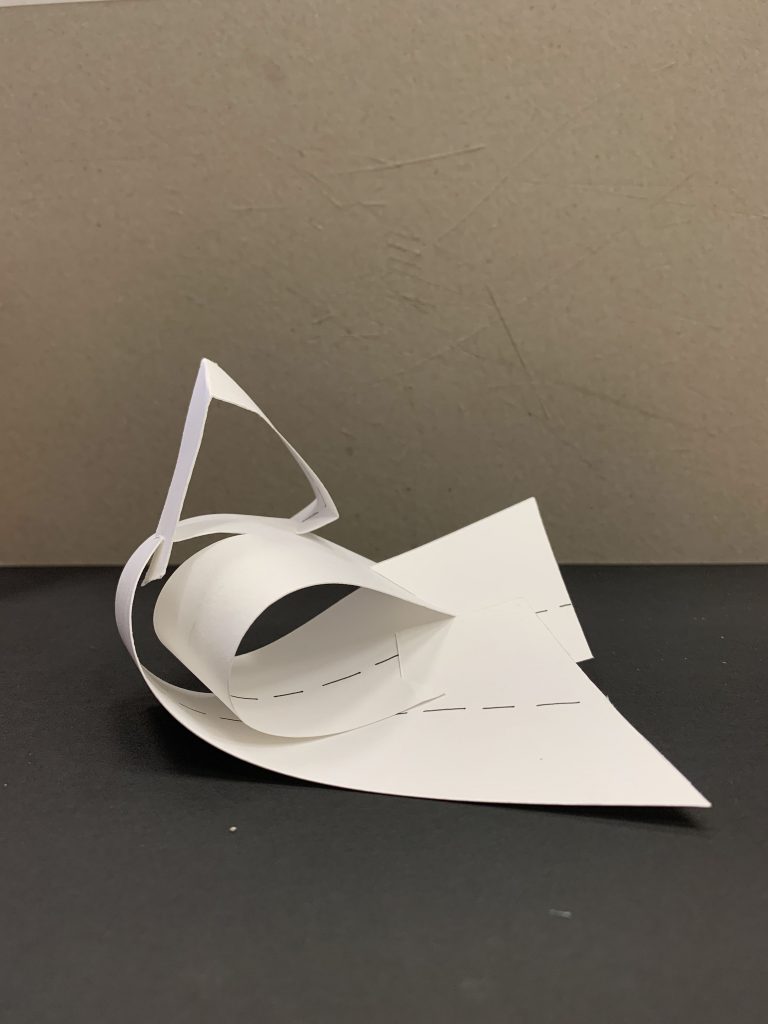
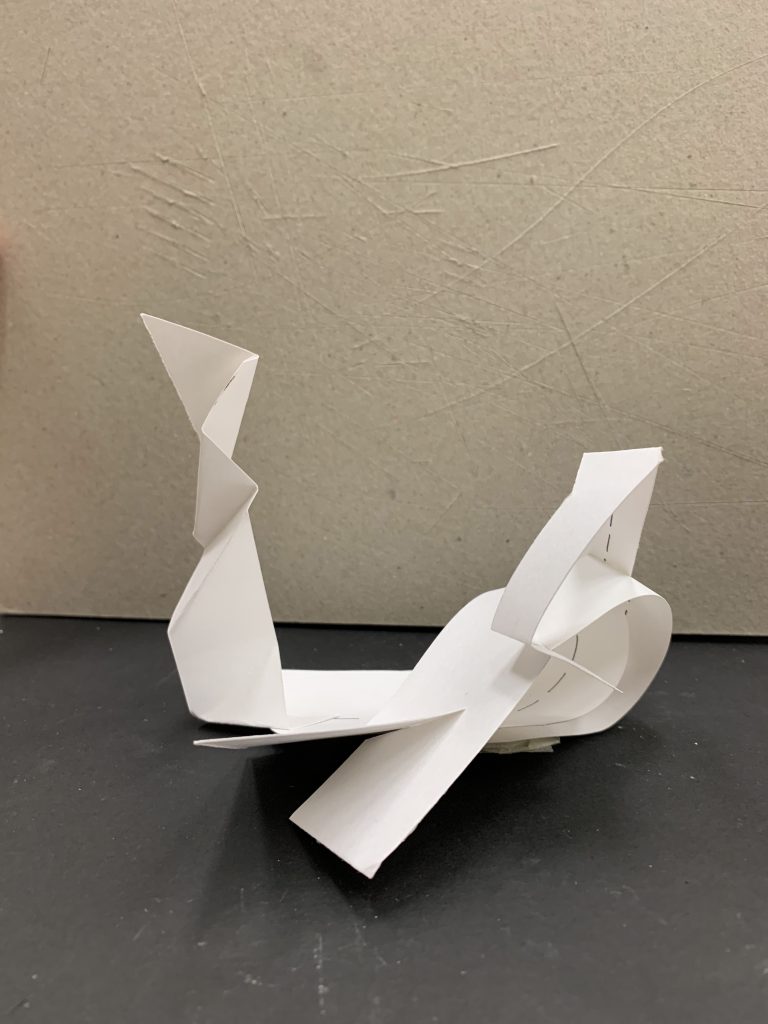
This is the first model I created for the preliminary round of construction and I throughly loved how the complex axis of the dominant piece twisted and wedged on each other. However, as I continued to build on around and on the dominant piece, it started to look rather flat as everything was placed in the same strip of the mounting board.
Second Planar Construction
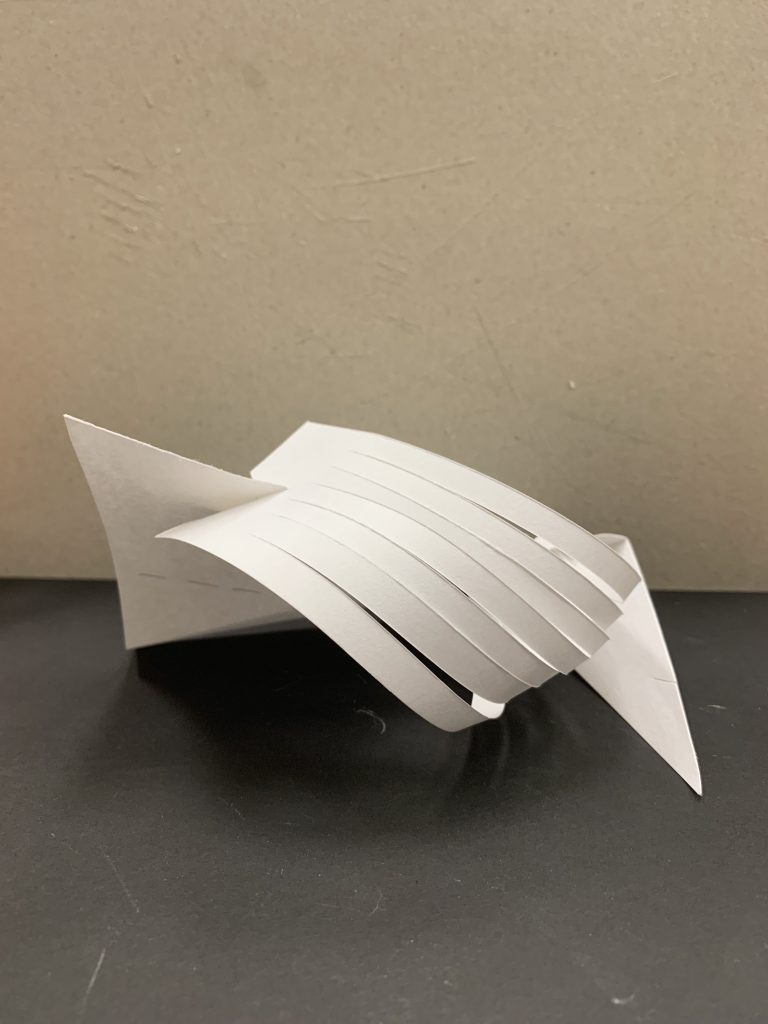
With the axis of each plane drawn for the preliminary round of construction, it was visible and relatively straightforward to make a fairly dynamic model. However, with the longer I worked on one face of the model, I realised that I had neglected the other faces and it was starting to look rather flat and blocked from other angles.
The pleats and the planes were also very neatly edged onto each other, but it was done at a wrong angle, resulting in a very ‘closed up’ looking model. The planar construction also looked rather heavy and one-dimensional because I didn’t play much with height and breadth.
Second Round
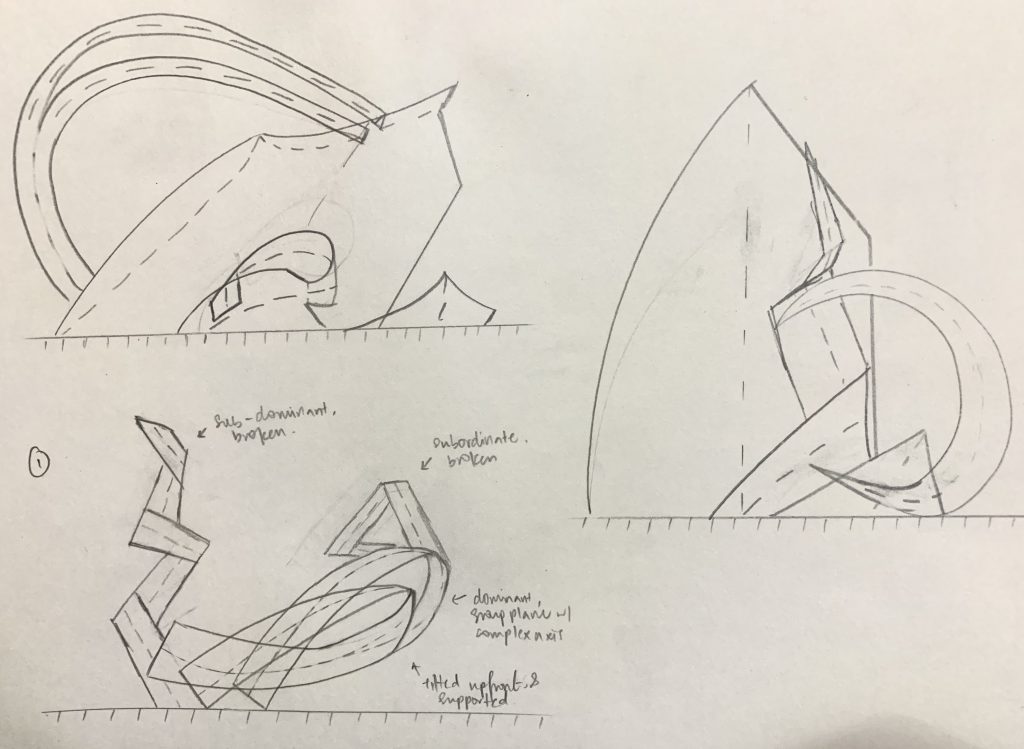
First Planar Construction
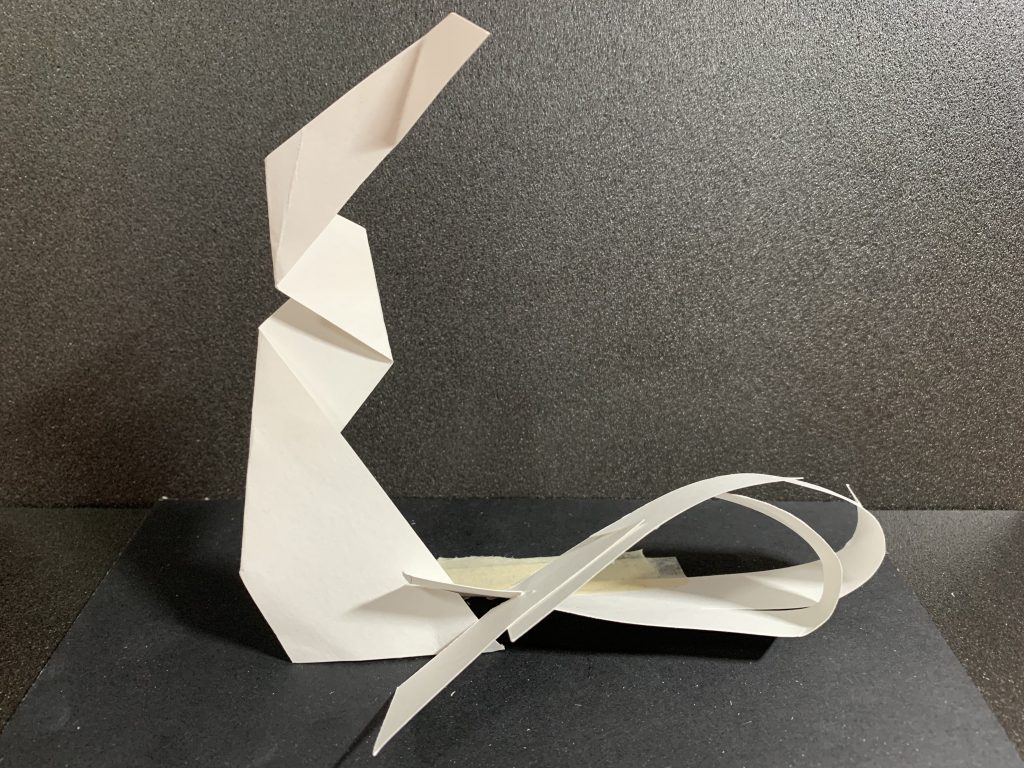

I remade this model with a new cut of planes that were supposedly more dimensional than the previous few but they didn’t work out as expected. The dominant broken plane turned out way smaller than the subdominant when comparatively measured. The subordinate plane was also wedged insecurely due to the inaccurate placements of the slits, resulting in its displacement on the journey home.
For this round’s review, Osh also mentioned that the composition was not a good one due to the twisting of the dominant plane. The two ribbon-like tails of the broken plane were too closely wedged onto each other that it lacked dimension from all sides of the composition. I attempted to prop it up in a more drastic manner and make a bigger dominant piece but it did not work out as expected so this idea was not developed further.
second Planar Construction
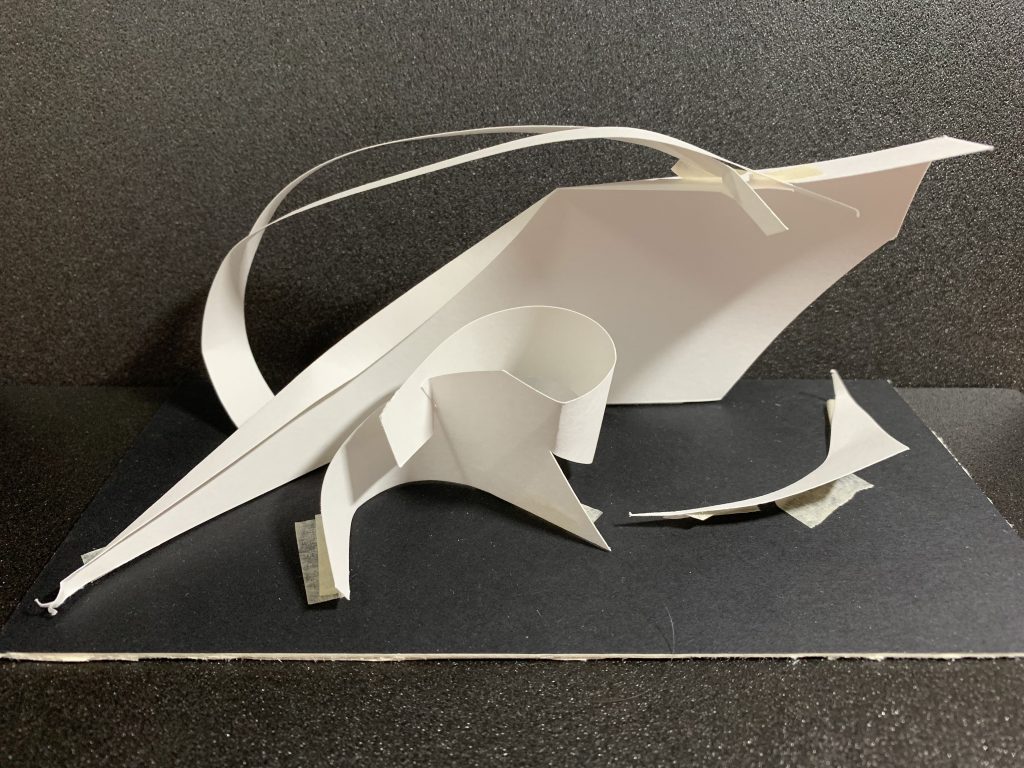
During the feedback session, Osh mentioned that this planar construction had pieces that were very nicely done, like the curved fold on the dominant piece, as well as the subordinate broken plane that guided the movement of the construction. Osh also mentioned that the subordinate piece was a nice addition, although it could’ve been a little bit smaller. The other subdominant piece however, was not a good addition to the model as it was a closed up piece of its own due to the broken piece wedging onto the main piece, forming a looped shape.
One other matter brought up was that the dominant piece was a very heavy and expansive piece that blocked out the whole construction when viewed from the back. There were very nice elements from this construction, but the main concern was the lack of a dynamism. This idea was not further developed after an attempt to upscale the planes to A4 fitting proportions, as it appeared lopsided with a lack of stability when untouched.
Third Planar Construction
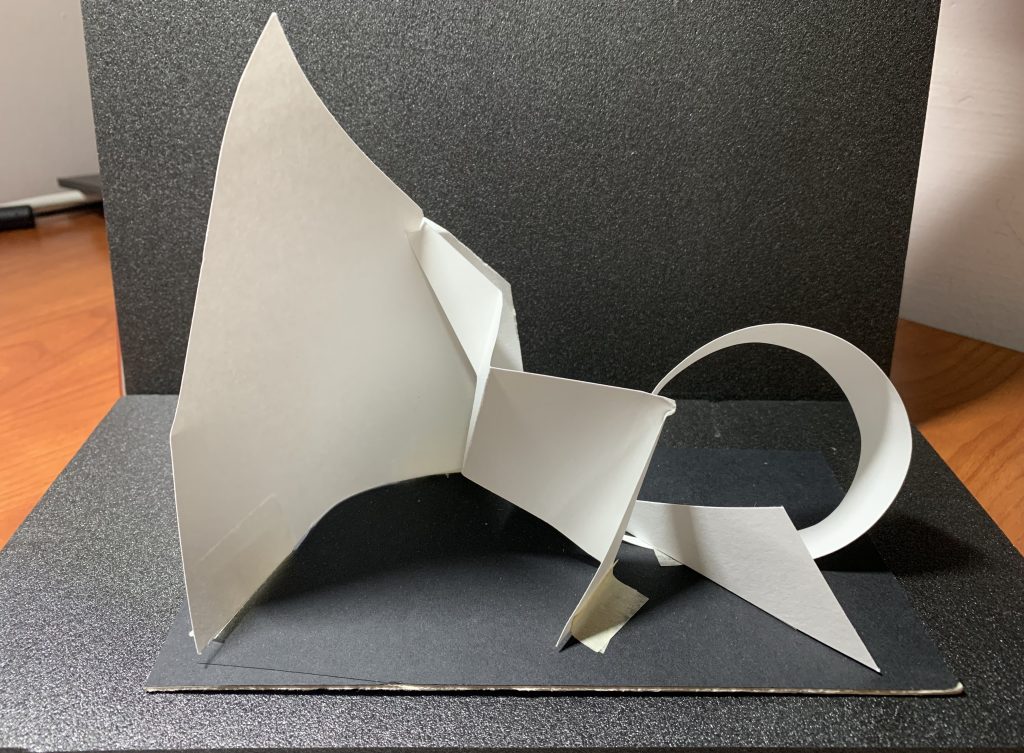
During the consultation, Osh mentioned that the dominant plane would be better transfigured to have an arch or a smaller breadth as it was blocking out the majority of the model when viewed from the side. The angular planes were working well together, however, the curved plane forming a mirrored ‘C’ on the right as seen in the picture was not well integrated into the model.
There was also an issue with the subdominant bent plane in the centre of the construction as it fought with the dominant plane for attention. The bents were too distinct and too widely spread that made it eye-catching and more interesting than the dominant piece. This planar construction was thus, the first to be eliminated due to the oddly contrasting planes that were being employed.
Third Round
First Planar Construction
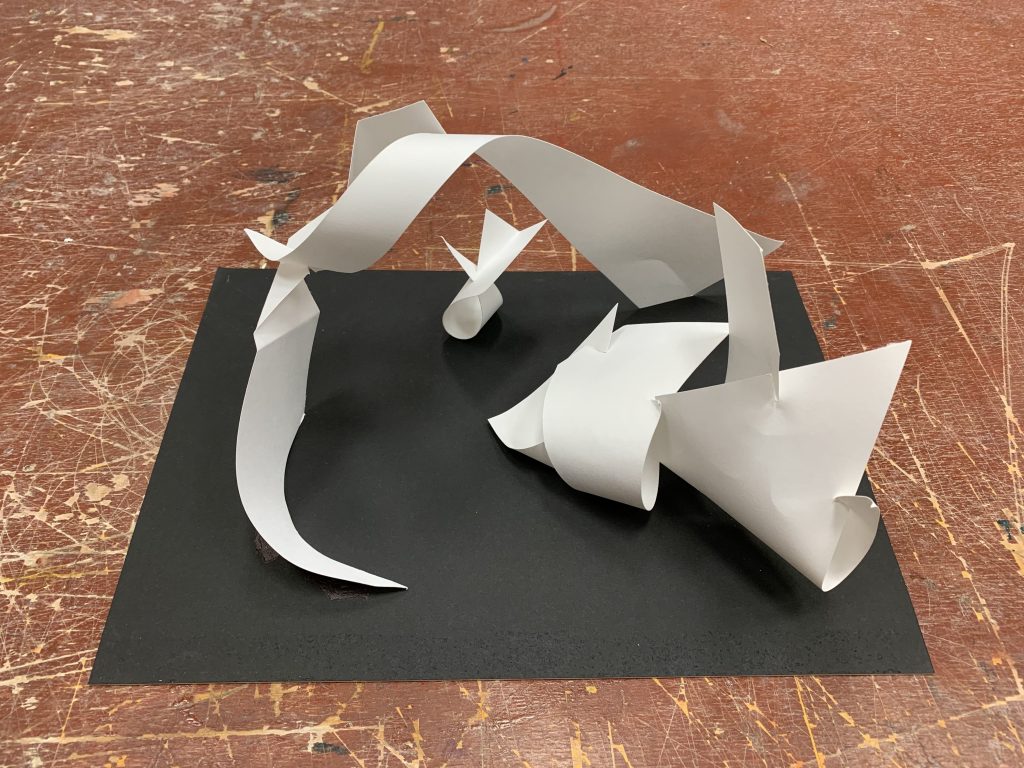
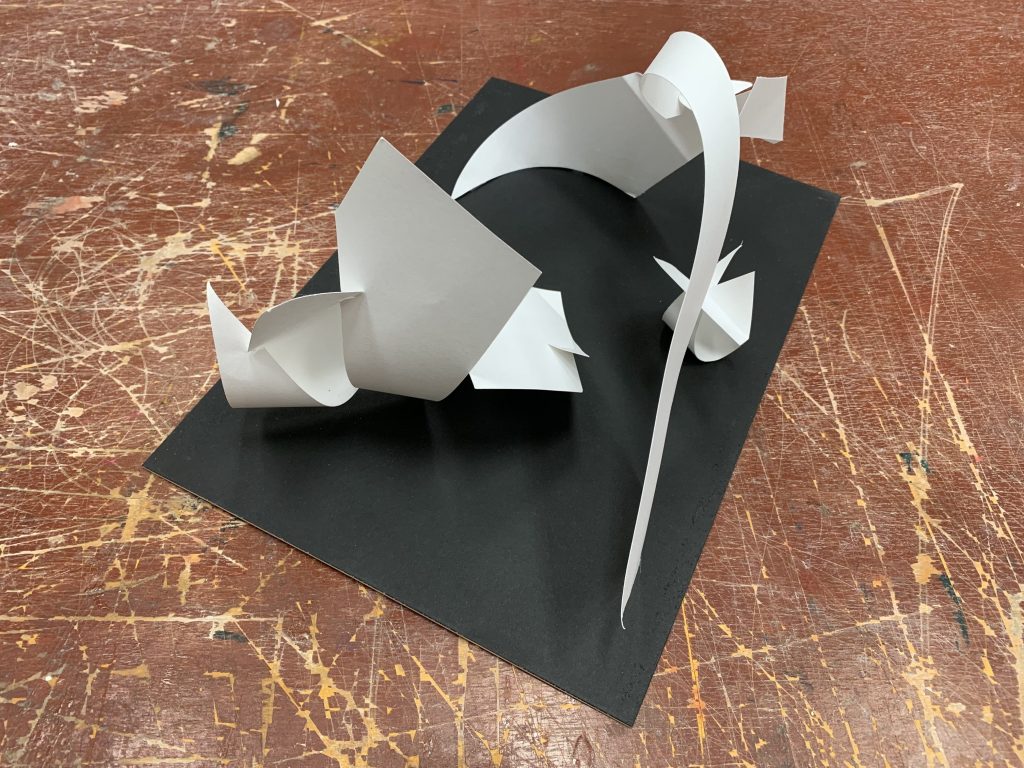
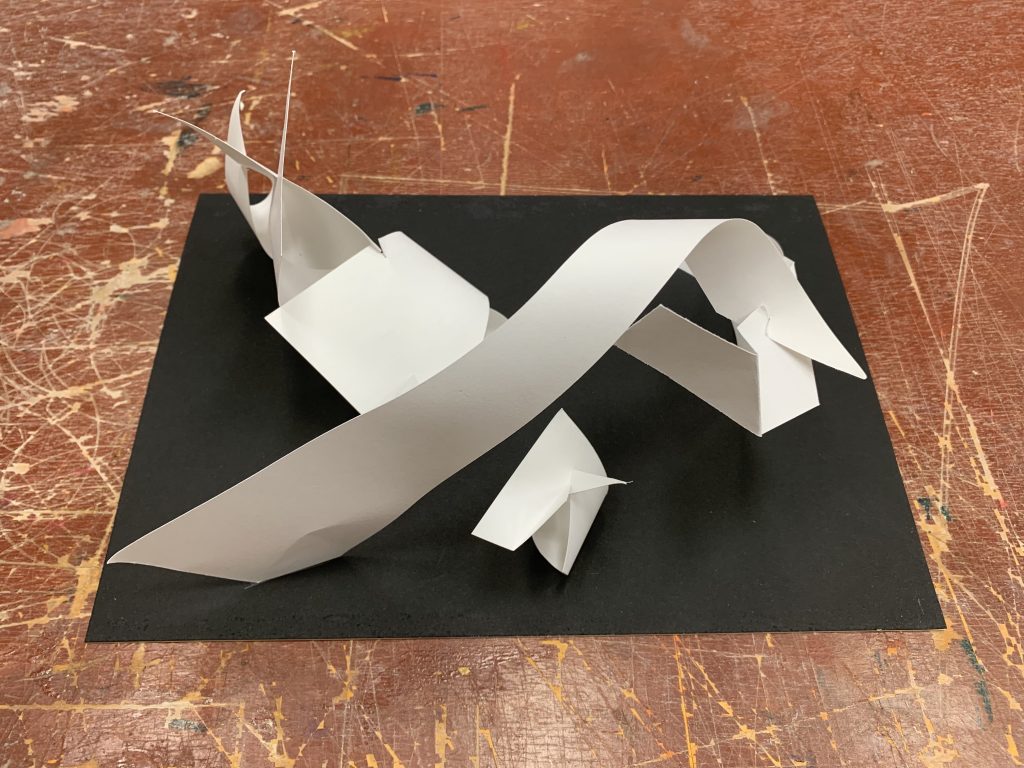
For the third round of constructions, I did a completely new one using 4 different planes but the feedback given was that there were too many ‘closed up’ planes, making it non-dynamic. The angular ends that jut up from the subordinate and subdominant structure were too jarring in the whole composition. It was not a bad structure on its own, but as a whole piece with the long arching curves from one end of the board to another, it didn’t fit as a whole.
There was not much feedback for this construction but I did not choose it for my final work as it was hard to expand on the design due to the closed off nature of the planes.
Second Planar Construction
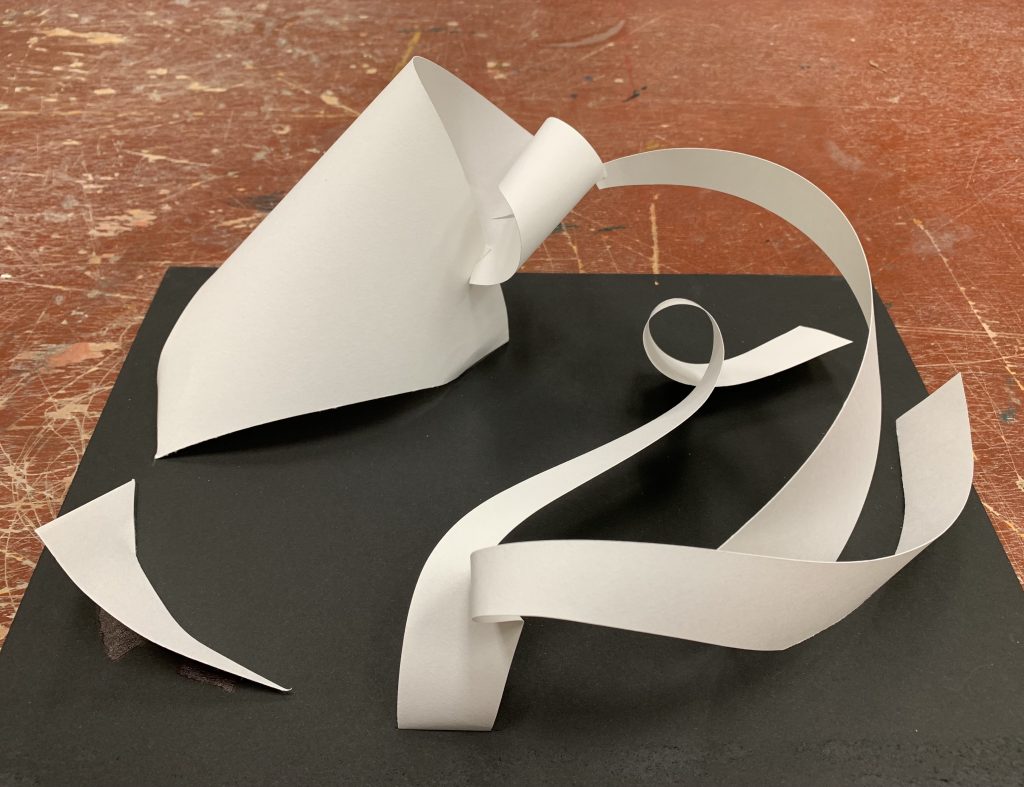
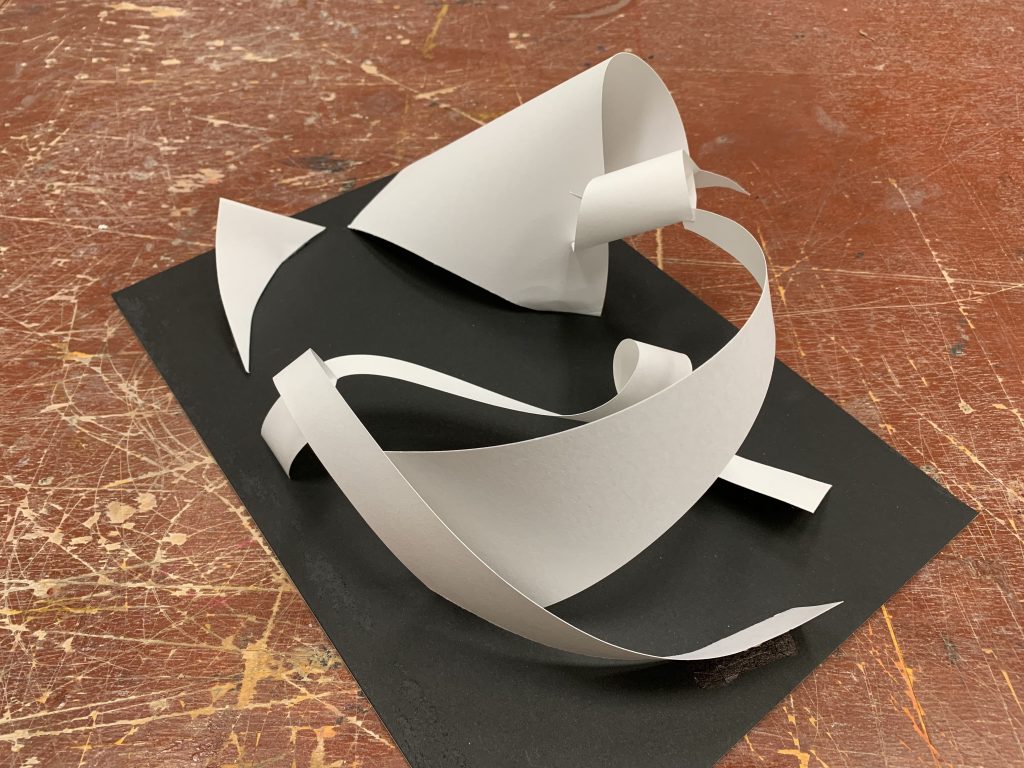
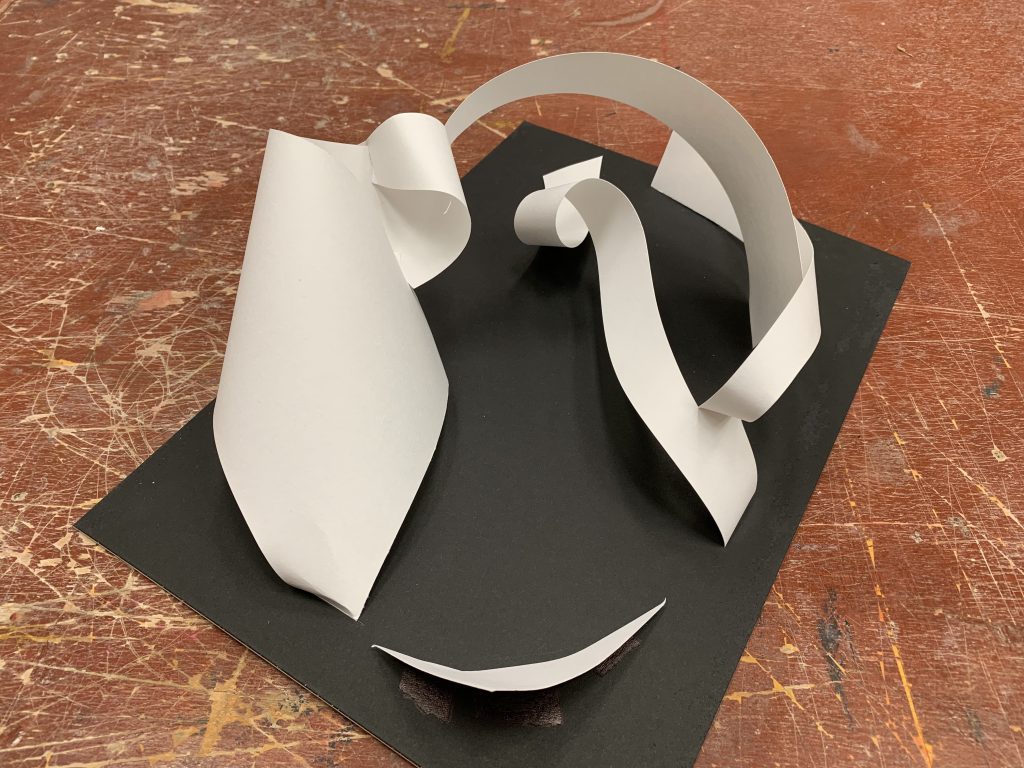
For this model, I tried to reinvent the twists from the second round’s second construction and the dominant plane’s presence from the third. The results took me by surprise when I first created it as I felt very drawn to how the curves flowed from one plane to another naturally. It was fluid, but one thing that stuck out the rather thick width of the broken subdominant plane that twisted on the ground of the construction.
It was drawing attention away from the heavy dominant plane on the corner of the mounting board. This was also likewise for the vertical arch that sprung out from the bottom right corner as seen in the first picture due to it towering the dominant structure. However, I eventually decided on using this planar construction for the final model after switching to art card and a foam board for better control over the end piece.
Final Results 🙂
My final work, Concordia, made by art card on black foam, can be found on the post titled “[DN1003] Project #2 – Planar Construction (Final)”.
